
Lead In Fidget Spinners
While lead in toys has become less prevalent in recent years, U.S. PIRG Education Fund tested several models of one of today’s hottest toys, fidget spinners, for the toxic heavy metal. Laboratory results indicated that two fidget spinners purchased at Target and distributed by Bulls i Toy, L.L.C. contained extremely high levels of lead. U.S. PIRG Education Fund calls on Target and Bulls i Toy to immediately recall these two fidget spinners and investigate how such high levels of lead were found in these toys. Also, we call on the U.S. Consumer Product Safety Commission (CPSC) to classify these fidget spinners as toys and hold them to federal standards for lead in children’s products.
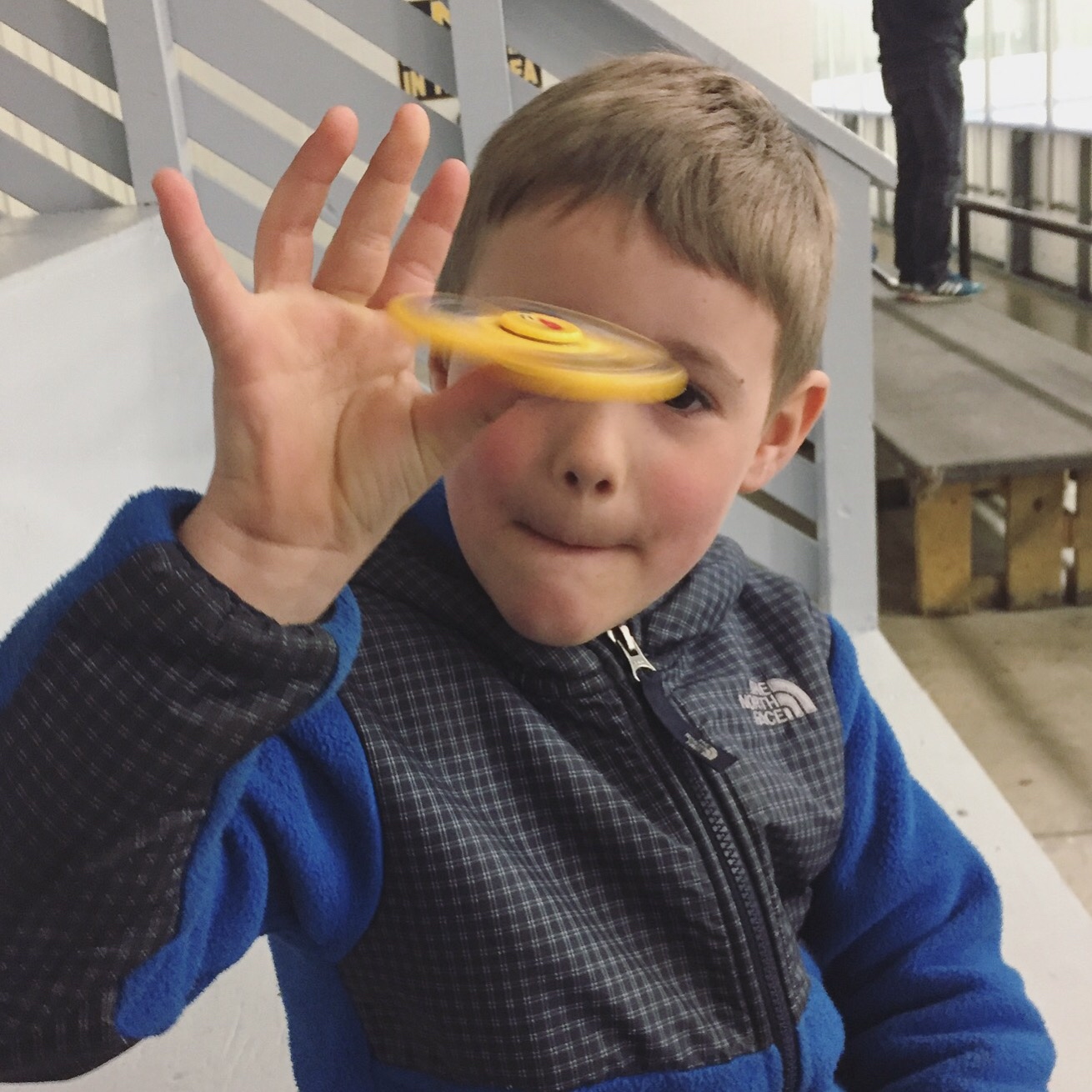
Downloads
By Dev Gowda and Kara Cook-Schultz, U.S. PIRG Education Fund
Introduction
The negative health effects of lead poisoning are well known. Unfortunately, lead remains a problem in our everyday lives. While much attention has been focused on tainted drinking water, such as the lead crisis in Flint, Mich., lead still remains a problem in toys. While lead in toys has become less prevalent in recent years, U.S. PIRG Education Fund tested several models of one of today’s hottest toys, fidget spinners, for the toxic heavy metal. Laboratory results indicated that two fidget spinners purchased at Target and distributed by Bulls i Toy, L.L.C. contained extremely high levels of lead.
U.S. PIRG Education Fund calls on Target and Bulls i Toy to immediately recall these two fidget spinners and investigate how such high levels of lead were found in these toys. Also, we call on the U.S. Consumer Product Safety Commission (CPSC) to classify these fidget spinners as toys and hold them to federal standards for lead in children’s products.
Background on Lead
Elemental lead is a metal occurring naturally in soils and rocks. It has a variety of commercial uses including in batteries, plastics, and radiation shielding. In the past, lead was also added to gasoline and paint. Because of lead’s toxicity, in 1978 it was banned in household paint, in products marketed to children, and in dishes and cookware in the United States. Lead is not discernible by sight or smell.
Lead exposure is particularly damaging for young children because of its impact on development. Even low levels of lead in blood have been shown to undermine IQ, attentiveness, and academic achievement. The Centers for Disease Control and Prevention (CDC) makes clear that any amount of lead in a child’s blood is unsafe. Moreover, since the effects of lead exposure cannot be reversed, it is especially important to prevent lead exposure to children in the first place.
Unfortunately, toys can pose a risk in part because lead is used in other countries and can be found in imported products. Additionally, lead may be incorporated into plastic. Lead is used to soften plastic and make it more flexible, but when the plastic is exposed to sunlight, air, or detergents, the chemical bond between the lead and plastic breaks down, forming lead dust. Children can inhale or come in contact with this dust when they put toys in or near their mouths.
Federal Standards for Lead
With a few exceptions, federal law requires that all children’s products manufactured after August 2011 contain no more than 100 parts per million (ppm) of total lead content in all accessible parts. The CPSC defines accessible parts as parts that a child could reach through “normal and reasonably foreseeable use and abuse of the product.”
Paint or similar surface coatings on all children’s products are subject to a limit of 90 ppm of total lead. (Household paints are also subject to this rule.)
Exceptions to these standards include metal components of bicycles, which cannot contain more than 300 ppm of lead. Components in electronic devices, inaccessible parts, and other items are exempt from the lead standard.
Note that these limits do not meet the recommendations of the American Academy of Pediatrics (AAP), which recommends that all products intended for use by children contain no more than trace amounts of lead, defined as 40 ppm, the high end of typical lead concentrations in uncontaminated soil.
Lead Found in Fidget Spinners
Several fidget spinners were tested for lead content by a CPSC-accredited laboratory. The fidget spinners were analyzed in accordance with CPSC-CH-E1001-8.3 using Inductively Coupled Plasma Mass Spectrometry (ICP/MS). The toys that tested for high levels of lead were then re-tested a second time to confirm the results. The results of the second test are included in this report.
The lab results showed two fidget spinners contained extremely high levels of lead:

Fidget Wild Premium Spinner Brass:
- The center circle tested for 33,000 ppm of lead.
- The arm tested for 22,000 ppm of lead.
This fidget spinner was purchased at Target and is distributed by Bulls i Toy, LLC, located in Des Moines, Iowa. Although the box says for ages 14+, the Target.com website where it is available for sale says both that it is for children 6+ and 14+ and specifically states that it is “framed as a toy”. See screenshot from Target.com website below. Moreover, it was found in the toy aisles of numerous Target stores throughout the country and is marketed as a toy. Below is a picture of the Fidget Wild Premium Spinner Brass in the toy aisle of a Target store. Therefore, we believe that this product should be treated as a toy since it’s marketed for use by children under 12 years.
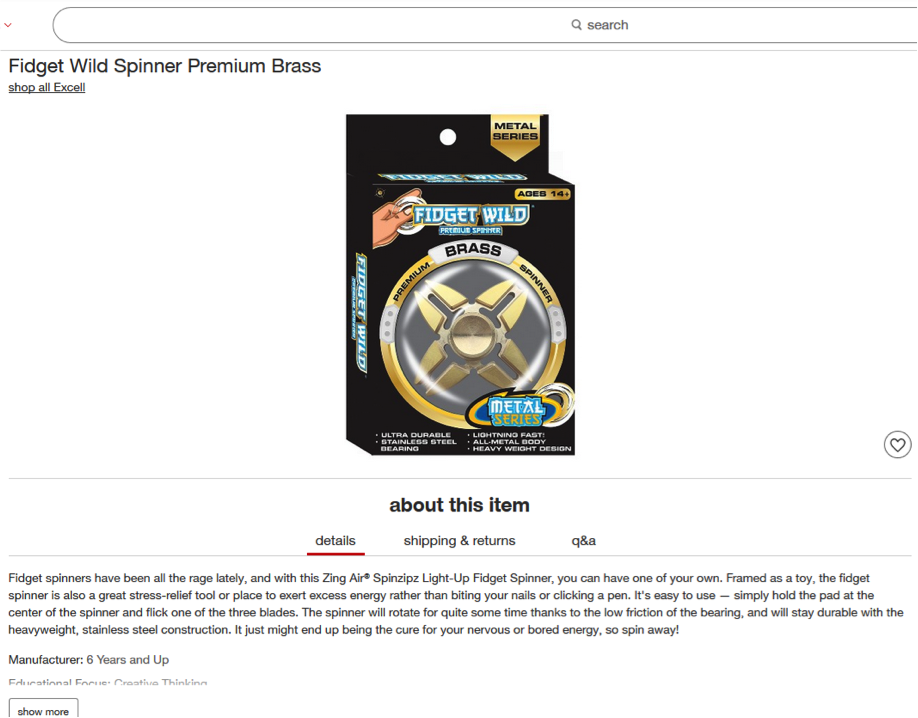
Screenshot from Target.com website.
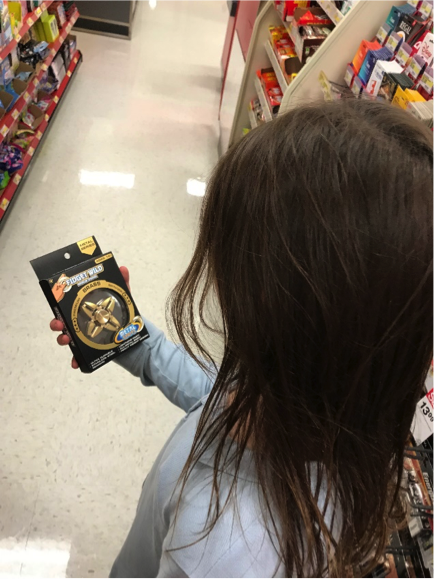
Fidget spinner in Target store.
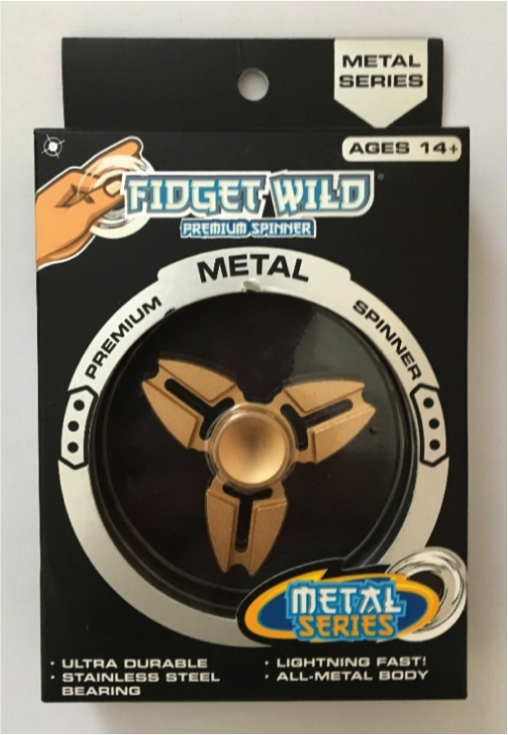
Fidget Wild Premium Spinner Metal:
- The center circle tested for 1,300 ppm of lead.
- The arm tested for 520 ppm of lead.
This fidget spinner was purchased at Target and is distributed by Bulls i Toy, LLC, located in Des Moines, Iowa. Although it says it’s for ages 14+, it was found in the toy aisles of numerous Target stores throughout the country and is marketed as a toy. Therefore, it should be held to federal lead standards for children’s products.
Furthermore, the BullsiToy.com website where Fidget Wild products are found is clearly a website for toys. Below is a screenshot of the Bulls i Toy website. The products they sell are marketed towards children and should, therefore, be classified as toys by the CPSC.
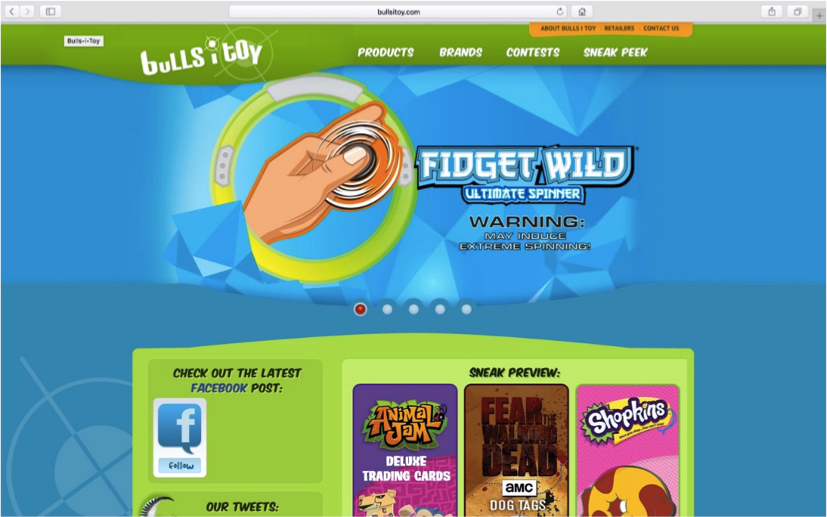
Alarmingly, when U.S. PIRG Education Fund notified the CPSC about the elevated lead levels in the fidget spinners, the CPSC responded in an email (screenshot below) that these fidget spinners are general use products, not toys, so the CPSC will not hold them to federal lead standards. When we alerted Target and the toy’s distributor to our findings, they pointed to the same CPSC statement and refused to address the problem. Belying that statement, U.S. PIRG Education Fund staff found these fidget spinners sold in the toy aisle of Target stores and on the Target.com website, which includes a statement that the product is intended for children ages 6 and up. Furthermore, common sense dictates that fidget spinners are meant for kids and therefore should be classified as toys. U.S. PIRG Education Fund calls on the CPSC to classify these fidget spinners as toys and hold them to the federal standard for lead in children’s products.

Recommendations
For consumers:
- Adults and children alike should stop using these fidget spinners.
- Call on the CPSC to classify all fidget spinners as toys so that they will be held to federal standards for lead in children’s products.
- Subscribe to email recall updates from the CPSC and other U.S. government safety agencies available at www.recalls.gov.
For Target, Corp and Bulls I Toy, L.L.C.:
- Immediately recall these fidget spinners and remove from store shelves and Target.com website.
- Issue a public statement about the recall due to high lead content.
- Investigate how these toys came to contain such extremely high levels of lead and make findings public.
- Ensure that other fidget spinners sold or manufactured do not contain high levels of lead.
- Notify customers who purchased these fidget spinners, where contact information is available, that they should stop using the fidget spinner due to high levels of lead and offer a return for full refund.
For U.S. Consumer Product Safety Commission:
- Ensure that all fidget spinners are classified as toys and that they must meet federal regulations for children’s products.
- Investigate any misleading marketing by Target, Corp. and Bulls i Toy, L.L.C. and take appropriate action. Although the labels on the toy boxes say 14+, they’re clearly being marketed to children under 12 years.
- Conduct testing for other fidget spinners, especially those labeled “brass” or “metal”, for lead.
U.S. PIRG Education Fund is a consumer and public health non-profit organization. We work to educate the public about dangers in toys, and for more than 30 years we have published an annual report titled Trouble in Toyland. Our survey of toys has led to more than 150 recalls and other enforcement actions.
Topics
Find Out More


Safe At Home in 2024?

5 steps you can take to protect your privacy now
